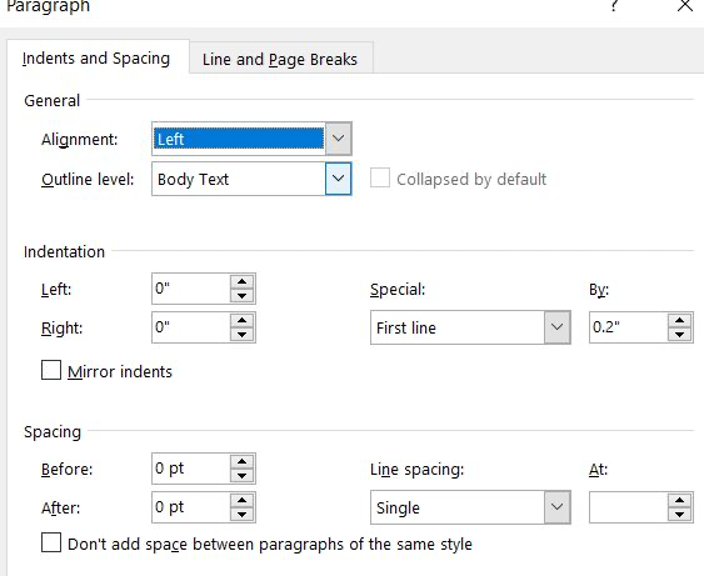


Note from Jane: This post has been updated to reflect changes in tools available on the market.
So your book is sitting in Microsoft Word, and you’d like to get that material converted into an ebook format you can sell through ebook retailers such as Amazon.
If you’re patient and willing to format your Word document carefully, you can use the automated conversion processes of Amazon Kindle, Smashwords, Draft2Digital, or similar ebook retailer and distribution services. They want to make it easy for you to get published, so they’ll convert your Word document into an ebook file instantly, as soon as you upload it.
But the results may look subpar if you don’t prepare your document first. I’m grateful to Dave Chesson at Kindlepreneur for sharing the following information on how to prep your Microsoft Word file to convert cleanly into an ebook file. Although it won’t have all the bells and whistles you’d get with professional book formatting software (e.g., Vellum or InDesign), it is cost-effective and used by many novelists. (This method will not work well if your work is highly illustrated or has many different styles, charts, etc.)
Side note: It’s possible you’ve also heard of MOBI files. These used to be the preferred ebook file format for Amazon. However, in 2021, Amazon announced that they would stop accepting MOBI files and prefer EPUB.
Before you begin, make sure you include all the different parts of a book. For example, most books have front matter and back matter.
For your font, start with a black, 12-point standard font like Times New Roman.
After the font is set and you’re ready, change the indentation in the Paragraph settings. When writing a book in Word that you intend to export as an ebook, you need to refrain from using the Tab key and implementing hard indentations for every paragraph because this results in an indentation that is much too large for a book.
Instead, click into the Paragraph settings and change the indentation to First Line, then 0.2” or 0.3.” You can try a few different indentation sizes and see which one looks better. The line spacing should be changed to Single and the alignment should be set to Left for the body text.
The margins should be changed to 0.5”. Since ebooks are read on various types of tablets and digital devices and have reflowable text, the page size doesn’t matter and you can leave it at the default, which is 8.5” x 11” letter in the US.

It’s best to keep all the Chapter Headings the same throughout the book. To make sure Chapter Headings are uniform for all chapters, select the Chapter Heading in the document, then navigate to the Styles tab.
There are several options provided by Microsoft Word, such as Heading 1, Heading 2, Title, etc. You can modify the font type and size if you would like it to be different from the ones provided by Microsoft Word.
Then, select the Chapter Heading you’re modifying and apply the Chapter Heading style you created to every chapter in your book. Customizing the headings allows you to easily change all Chapter Headings or other types of headings in your book without having to change them manually.
After the chapter headings have been standardized, you can go to the View tab and check the box by Navigation Pane. This will allow the Navigation Pane to pop up on the side of the document. It shows all the chapter headings, making it easy to click to the beginning of each chapter without scrolling through the document.
So you’ve successfully formatted your book in Word. Now what? Can you just upload it to Kindle Direct Publishing (KDP) or another book service as is? Or do you have to do more?
Technically, you don’t have to do any conversions. However, pay special attention when previewing your file. Complex formats such as tables, images, and so on may not convert well. Verify everything looks good before publishing. You may also want to use one of the tools mentioned below to convert your Word file into EPUB outside of KDP and make direct changes to the EPUB file (which you can then upload to KDP).
There are more advanced aspects of book formatting, such as adding drop caps to the beginning of each chapter, creating fancier chapter headings, etc. As you become more comfortable with book formatting, you can experiment with more advanced style choices.
If you would like further information about book formatting check out Dave Chesson’s full guide on all things book formatting.
Here are workable options that don’t involve buying software, with one exception. Again, these methods will only be appropriate if your book is predominantly text, with few images and specific formatting requirements.
Calibre is a free software that can convert your Word file into any ebook format. You can download Calibre here. Converting your book is painless, but preview your file extensively to make sure all your formatting translated well. You’ll likely need to make additional changes.
Authors often report the Draft2Digital conversion from Word to EPUB to be the smoothest and easiest they’ve used. Fortunately, you don’t have to distribute through Draft2Digital in order to take advantage of their conversion; their terms of service allow you to set up an account, upload your Word doc, export the EPUB file, then take it elsewhere, to another retailer or distributor. (Not all ebook distributors are so kind in their terms.)
Once you’ve downloaded the EPUB file from the automated conversion process, you may be happy with it exactly as is, or you may want to open it up in Calibre to make adjustments.
Amazon offers Kindle Create to help you design and format ebook files using Word, but there’s one huge caveat: They will create ebook files that work on Kindle, but they will not be EPUB files. That means that the files you prepare using Amazon’s tools will not work at other retailer or distribution sites.
Reedsy is best known as a freelance marketplace where you can find editors and other publishing professionals to help you edit, publish, and promote your work. They also offer a suite of editing and collaboration tools that can help you format and export EPUB (and print book) files out of their cloud-based system. Then you can load up your EPUB in another software, such as Calibre or Sigil, to make further adjustments if you don’t want to keep working in Reedsy.
One of the most beloved tools of indie authors, Vellum is an intuitive software that helps you design, format, and export great-looking ebooks, in EPUB format. It allows you to start by uploading Word documents (among others). However, it will cost you. While the software is free to download, being able to export ebook files will cost you a one-time fee of $199. This option makes the most sense for authors who expect to be producing multiple ebook files over many months or years.
If you own or use any of the following tools:
… then you can export your document as an EPUB file. Sometimes it’s not a bad idea to take your Microsoft Word document, import it into or open it inside another one of these systems, then see how well it exports as EPUB.
Sigil is a free, open-source editor for EPUB (ebook) files. Probably the most difficult part of using Sigil is identifying how to download and install it, since it’s on Github and isn’t exactly marketed to the average non-tech consumer.
However, once you have the application installed, it’s not difficult to work with if you know a little HTML. If you can use WordPress—or even if you’re comfortable with Microsoft Word’s quirks—you can probably handle Sigil once your content is imported properly. It’s a very lightweight software.
Your turn: What tricks or tips do you have to share about creating and editing EPUB files? Let me know in the comments.
Jane Friedman has spent nearly 25 years working in the book publishing industry, with a focus on author education and trend reporting. She is the editor of The Hot Sheet, the essential publishing industry newsletter for authors, and was named Publishing Commentator of the Year by Digital Book World in 2023. Her latest book is The Business of Being a Writer (University of Chicago Press), which received a starred review from Library Journal. In addition to serving on grant panels for the National Endowment for the Arts and the Creative Work Fund, she works with organizations such as The Authors Guild to bring transparency to the business of publishing.